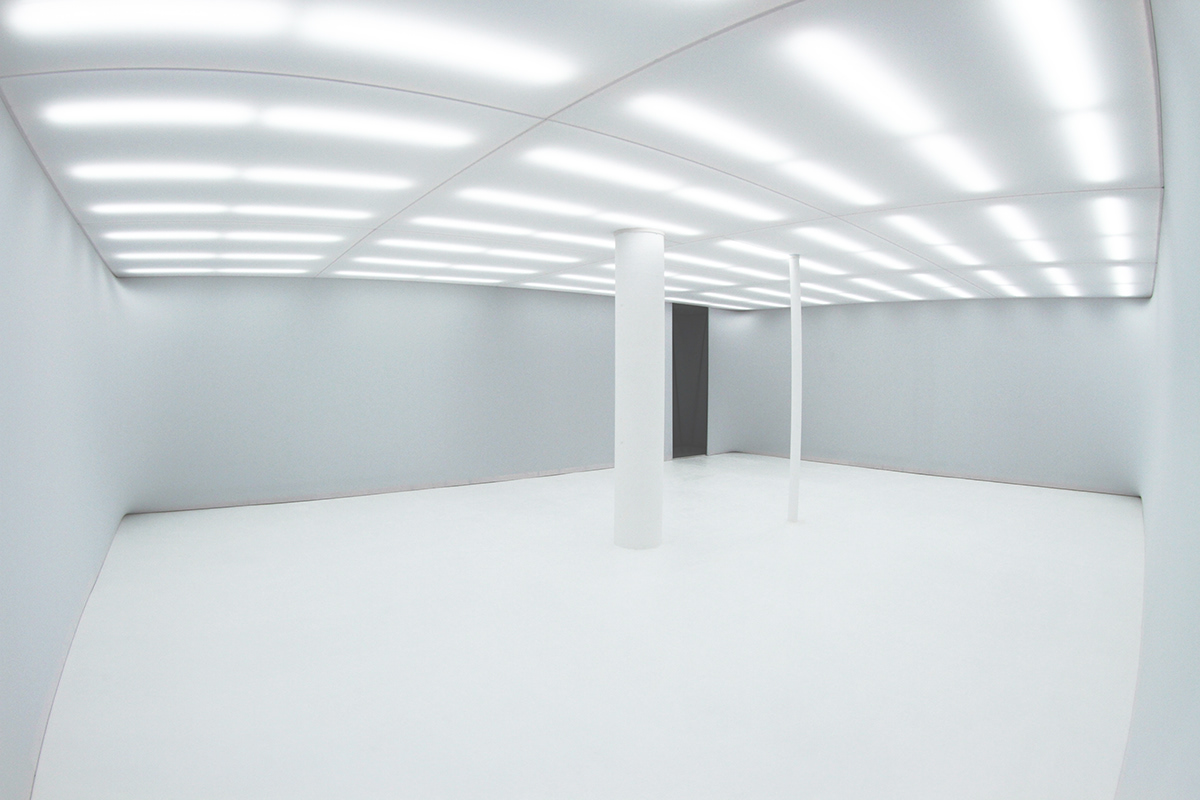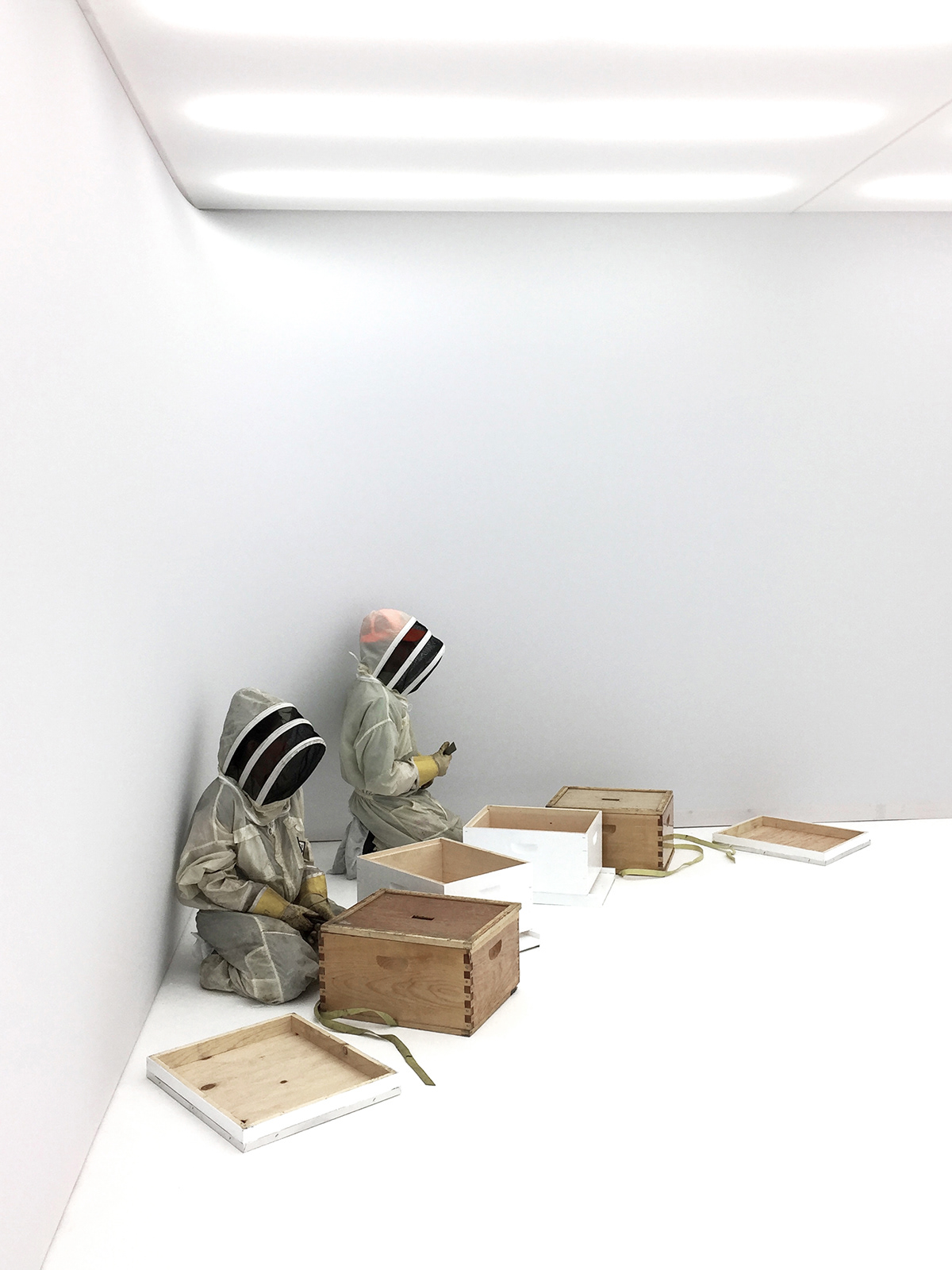Synthetic Apiary
Synthetic Apiary : A Perpetual Spring Environment for Bees and Humans
Markus Kayser, Jorge Duro-Royo, Sunanda Sharma, Christoph Bader, Dominik Kolb, Prof. Neri Oxman | 2016 | MIT Media Lab
SYNOPSIS
The Synthetic Apiary explores the possibility of a controlled space in which seasonal honeybees can thrive year-round. Light, humidity, and temperature are engineered to simulate a perpetual spring environment. Bees are provided with synthetic pollen and sugared water, and evaluated regularly for health and wellbeing. In this initial experiment, humans and honeybees co-habitate, enabling natural cultivation in an artificial space across scales, from organism- to building-scale.
In the apiary, the Queen's biological cycle adapts to the new environment inducing egg laying. These bees exist only in the Synthetic Apiary, but as adult bees are able to function normally in their natural environment with their innate behavior repertoires. Minute 2:33 in the video documents the first birth in a synthetic environment: the only life this bee knows is of an existence in the Synthetic Apiary.
DESCRIPTION
The Synthetic Apiary bridges the organism- and building-scale by exploring a “keystone species": bees. We investigate the cohabitation of humans and bees through a controlled atmosphere and observation of resulting behaviors. The project applies Mediated Matter’s ongoing research into biologically augmented digital fabrication with silkworms and eusocial insect communities to product, architectural, and possibly urban, scales. Many insect communities present collective behavior known as “swarming,” prioritizing group over individual survival, while constantly working to achieve common goals. Often, groups of these eusocial organisms leverage collaborative behavior for relatively large-scale construction. For example, ants create extremely complex networks by tunneling, wasps generate intricate paper nests with materials sourced from local areas, and bees deposit wax to build intricate hive structures.

Honeybees are ideal model organisms because of the historical interplay between their communities and humans. Bees, as agents of cross-pollination, are an essential part of our agricultural production; without them, we would not have the fruits and the vegetables that nourish our lives. Natural honeybee hives can house tens of thousands of insects, all working together as prescribed by a social division of labor. Large-scale hives are made of beeswax and are used for food storage and brood development, as well as shelter. As of now, comparatively little is known about what factors influence the form and structure of hives, though several recent projects have explored using bees as builders or 'fabricators’ in collaboration with humans.
Massive decline in bees worldwide, due to various factors affecting bee health such as agricultural chemicals, disease, and habitat loss, has raised alarm. As such, the cultivation of bees, the education about their health, and the advancement of non-standard bee environments has become increasingly important for their survival, and for ours. Our architectural experiment incorporates several technological and biological investigations, and provides a setup for behavioral experiments regarding both bee fabrication capabilities and health. At the core of this project is the creation of an entirely synthetic environment enabling controlled, large-scale investigations of hives. As shown in the video at time 2:33, eggs are laid in the synthetic environment, indicating a successful combination of temperature, humidity, light, and nutrition for queens. This proves the ability to shift the entire cycle of bee behavior, out of winter mode and into spring mode – and is a first demonstration of sustainable life in a completely synthetic environment. The long-term goal is to integrate biology into a new kind of architectural environment, and thereby the city, for the benefit of humans and eusocial organisms






CREDITS
Research and Design by the Mediated Matter Group at the MIT Media Lab. Lead researchers include Markus Kayser, Sunanda Sharma, Jorge Duro-Royo, Christoph Bader, Dominik Kolb, and Prof. Neri Oxman (Group Director). The Synthetic Apiary team wishes to convey gratitude to Mori Building Company for their generous sponsorship of this project. We would also like to acknowledge the Mori Art Museum and Loftworks for their support. Collaborators include: The Best Bees Company: Dr. Noah Wilson-Rich, Philip Norwood, Jessica O’Keefe, Rachel Diaz-Granados; Dr. James Weaver (Wyss Institute); Dr. Anne Madden (North Carolina State University); Space Managers Andy and Susan Magdanz; and Daniel Maher. Videographers: James Day and the Mediated Matter group. Media Lab Facilities: Jessica Tsymbal and Kevin Davis. MIT EHS: Lorena Altamirano.


